News - Racial Justice
-
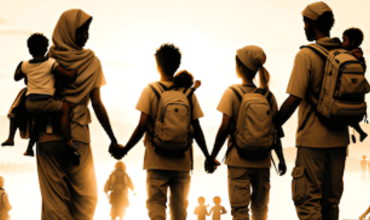 September 30, 2025Every day when we watch the news, we see stories of war, famine, civil unrest, and global climate change forcing people to leave their homes and seek refuge in other lands. Unfortunately, this is not a new phenomenon. On Sunday, October 5, the Church observes the 111th World Day of Migrants and Refugees, an opportunity to reflect on the connections between hope, migration and mission. It began in 1914 to support the high numbers of people from the rural portion of southern Italy and the island of Sicily who were departing because of economic hardship with little hope of ever improving their lives.Read More
September 30, 2025Every day when we watch the news, we see stories of war, famine, civil unrest, and global climate change forcing people to leave their homes and seek refuge in other lands. Unfortunately, this is not a new phenomenon. On Sunday, October 5, the Church observes the 111th World Day of Migrants and Refugees, an opportunity to reflect on the connections between hope, migration and mission. It began in 1914 to support the high numbers of people from the rural portion of southern Italy and the island of Sicily who were departing because of economic hardship with little hope of ever improving their lives.Read More -
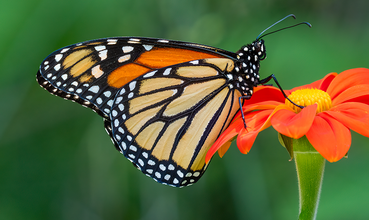 August 27, 2025“Our response to the arrival of migrating persons can be summarized by four words: welcome, protect, promote and integrate.” - Pope Francis. Today, this response to a migrating person – welcoming, protecting, promoting and integrating them into the United States – also needs to include migrants who may have been here for years or even decades. One way to offer protection is to share information about certain rights and protections that all people in the United States, regardless of immigration status, have under the Constitution. That's where red cards come in. Immigrant Legal Resource Center’s (ILRC) red cards give examples of how people can exercise these rights, for instance when interacting with Immigration and Customs Enforcement (ICE) or other law enforcement agencies.Read More
August 27, 2025“Our response to the arrival of migrating persons can be summarized by four words: welcome, protect, promote and integrate.” - Pope Francis. Today, this response to a migrating person – welcoming, protecting, promoting and integrating them into the United States – also needs to include migrants who may have been here for years or even decades. One way to offer protection is to share information about certain rights and protections that all people in the United States, regardless of immigration status, have under the Constitution. That's where red cards come in. Immigrant Legal Resource Center’s (ILRC) red cards give examples of how people can exercise these rights, for instance when interacting with Immigration and Customs Enforcement (ICE) or other law enforcement agencies.Read More -
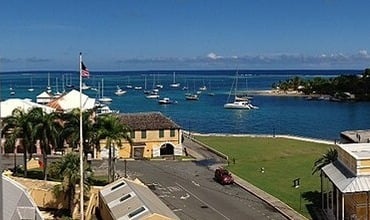 July 28, 2025My first exposure to the slave trade outside of something I read in a textbook was a visceral experience I had when I visited the Slavery Memorial at the Christiansted National Historic site when I lived on the island of St. Croix in the US Virgin Islands. St. Croix was a Danish territory from 1733 to 1917 and one of the centers of slave trading in the Caribbean. There are records of more than 100,000 slaves that were brought, confined, auctioned and sold in St. Croix from 1734 to 1803. The Danish West India Company kept meticulous records of the origin, family composition and disposition of each slave which were mostly sourced from what is now modern Ghana in West Africa which was also a Danish colony.Read More
July 28, 2025My first exposure to the slave trade outside of something I read in a textbook was a visceral experience I had when I visited the Slavery Memorial at the Christiansted National Historic site when I lived on the island of St. Croix in the US Virgin Islands. St. Croix was a Danish territory from 1733 to 1917 and one of the centers of slave trading in the Caribbean. There are records of more than 100,000 slaves that were brought, confined, auctioned and sold in St. Croix from 1734 to 1803. The Danish West India Company kept meticulous records of the origin, family composition and disposition of each slave which were mostly sourced from what is now modern Ghana in West Africa which was also a Danish colony.Read More -
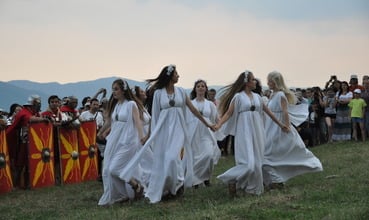 July 22, 2025My mother and I met in Romania this summer to prepare a memorial service for my uncle’s one year death anniversary and to put the home I grew up in for sale. I was not able to attend the funeral, so it was a particularly solemn visit for me. We wanted the presence of an elder, Mihai, the last surviving sibling of my grandmother at the memorial, so we went to our ancestral village to pick him up. At 85, he was jovially riding his bicycle on the unpaved medieval road.Read More
July 22, 2025My mother and I met in Romania this summer to prepare a memorial service for my uncle’s one year death anniversary and to put the home I grew up in for sale. I was not able to attend the funeral, so it was a particularly solemn visit for me. We wanted the presence of an elder, Mihai, the last surviving sibling of my grandmother at the memorial, so we went to our ancestral village to pick him up. At 85, he was jovially riding his bicycle on the unpaved medieval road.Read More -
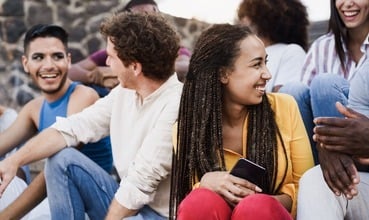 June 30, 2025It’s scary, but imagine being the target of that behavior simply because of your gender, race, ethnicity, religion or sexual orientation, perhaps on the street, MUNI or BART. We can reach out and offer support, even help, and as interested and socially-responsible citizens, we are called to help when we see people in need. In particular, as Catholics, we are called on to promote the dignity of all persons, leaving no one outside our circle of compassion. Everyone — older adults, children, people with special needs, regardless of their race, religion, ethnicity, gender or sexual orientation— has the right to be treated with dignity, compassion and humanity.Read More
June 30, 2025It’s scary, but imagine being the target of that behavior simply because of your gender, race, ethnicity, religion or sexual orientation, perhaps on the street, MUNI or BART. We can reach out and offer support, even help, and as interested and socially-responsible citizens, we are called to help when we see people in need. In particular, as Catholics, we are called on to promote the dignity of all persons, leaving no one outside our circle of compassion. Everyone — older adults, children, people with special needs, regardless of their race, religion, ethnicity, gender or sexual orientation— has the right to be treated with dignity, compassion and humanity.Read More -
 May 12, 2025Born in Norwalk, CA, in 1926, to immigrant parents, Asawa’s life was marked by early adversity. During World War II, she and her family—like approximately 120,000 other Japanese Americans (including US-born citizens)—were unjustly forced into US internment camps. Yet even in hardship, Asawa was able to discover beauty. Like St. Ignatius, who found God in all things—even suffering—she ultimately transformed trauma into something sacred. Asawa is most well-known for her groundbreaking wire sculptures: floating, transparent forms inspired by nature and basket weaving she observed during an artists’ tour of Latin America. These sculptures remind us to view the world contemplatively—to find grace in the ordinary, and the divine in the overlooked.Read More
May 12, 2025Born in Norwalk, CA, in 1926, to immigrant parents, Asawa’s life was marked by early adversity. During World War II, she and her family—like approximately 120,000 other Japanese Americans (including US-born citizens)—were unjustly forced into US internment camps. Yet even in hardship, Asawa was able to discover beauty. Like St. Ignatius, who found God in all things—even suffering—she ultimately transformed trauma into something sacred. Asawa is most well-known for her groundbreaking wire sculptures: floating, transparent forms inspired by nature and basket weaving she observed during an artists’ tour of Latin America. These sculptures remind us to view the world contemplatively—to find grace in the ordinary, and the divine in the overlooked.Read More -
 March 25, 2025April is Arab-American Heritage Month—a time to celebrate the rich history, culture, and contributions of Arab Americans to our society. From scientists such as Nobel Prize winner Elias J. Corey, to business leaders such as Steve Jobs, and to writers as diverse as Kahlil Gibran, Edward Said, and Raymond Khoury, Arab Americans have woven their talents into the fabric of our nation. Arab communities in the US are incredibly diverse, with roots in over 20 countries, including Lebanon, Egypt, Syria, Palestine, Iraq, and Morocco. They also bring a variety of faith traditions—Christian (Catholic, Orthodox, and Protestant), Muslim, and others—all of which add to the beauty of our shared human story.Read More
March 25, 2025April is Arab-American Heritage Month—a time to celebrate the rich history, culture, and contributions of Arab Americans to our society. From scientists such as Nobel Prize winner Elias J. Corey, to business leaders such as Steve Jobs, and to writers as diverse as Kahlil Gibran, Edward Said, and Raymond Khoury, Arab Americans have woven their talents into the fabric of our nation. Arab communities in the US are incredibly diverse, with roots in over 20 countries, including Lebanon, Egypt, Syria, Palestine, Iraq, and Morocco. They also bring a variety of faith traditions—Christian (Catholic, Orthodox, and Protestant), Muslim, and others—all of which add to the beauty of our shared human story.Read More -
 March 3, 2025Did you know that the 1906 earthquake in San Francisco played an influential role in the life of the American journalist, Catholic social activist, and founder of the Catholic Worker Movement, Dorothy Day? Dorothy Day was born on November 8, 1897, in Brooklyn, New York. Her father, a sportswriter, took a position with the San Francisco Chronicle and the family moved to Oakland, California. In the aftermath of the earthquake, nine-year-old Dorothy witnessed the outpouring of support and self-sacrifice by the community. Young Dorothy drew a lesson about individual action and the Christian community, two guiding principles that would inform her entire life.Read More
March 3, 2025Did you know that the 1906 earthquake in San Francisco played an influential role in the life of the American journalist, Catholic social activist, and founder of the Catholic Worker Movement, Dorothy Day? Dorothy Day was born on November 8, 1897, in Brooklyn, New York. Her father, a sportswriter, took a position with the San Francisco Chronicle and the family moved to Oakland, California. In the aftermath of the earthquake, nine-year-old Dorothy witnessed the outpouring of support and self-sacrifice by the community. Young Dorothy drew a lesson about individual action and the Christian community, two guiding principles that would inform her entire life.Read More -
 February 19, 2025This year, Ramadan is being celebrated within the Islamic community beginning the evening of Friday, February 28 and lasting until March 29. Join us in wishing our Muslim friends a “Ramadan Mubarak”, meaning “have a blessed and generous Ramadan.” On behalf of the Anti-Racism Committee, parishioner Rick Fain offers this description so we may better understand the faith of our Muslim neighbors in San Francisco and around the world.Read More
February 19, 2025This year, Ramadan is being celebrated within the Islamic community beginning the evening of Friday, February 28 and lasting until March 29. Join us in wishing our Muslim friends a “Ramadan Mubarak”, meaning “have a blessed and generous Ramadan.” On behalf of the Anti-Racism Committee, parishioner Rick Fain offers this description so we may better understand the faith of our Muslim neighbors in San Francisco and around the world.Read More -
 January 27, 2025The theme for Black History Month this year is Labor, which provides a valuable lens to consider the contributions of Black labor to our country, and our community. The month starts with Freedom Day, February 1, which was designated in 1948 to commemorate the signing of the 13th Amendment in 1865. This landmark legislation abolished slavery, except as punishment for a crime, marking a pivotal moment in the journey toward freedom and equality.Read More
January 27, 2025The theme for Black History Month this year is Labor, which provides a valuable lens to consider the contributions of Black labor to our country, and our community. The month starts with Freedom Day, February 1, which was designated in 1948 to commemorate the signing of the 13th Amendment in 1865. This landmark legislation abolished slavery, except as punishment for a crime, marking a pivotal moment in the journey toward freedom and equality.Read More -
 January 21, 2025Lunar New Year is celebrated by billions of people in East Asia and beyond. We asked Saint Ignatius parishioner Vanita Louie to share how her family celebrates the holiday, also known as Chinese New Year.Read More
January 21, 2025Lunar New Year is celebrated by billions of people in East Asia and beyond. We asked Saint Ignatius parishioner Vanita Louie to share how her family celebrates the holiday, also known as Chinese New Year.Read More -
 February 3, 2022As we begin our month-long celebration of Black History Month, this week's In The Margins invites us to take a long, loving look at the real. The history of our country and our Church has often been a source of anguish for our brothers and sisters of color. Their experiences demand our attention, our accompaniment, and our compassion.Read More
February 3, 2022As we begin our month-long celebration of Black History Month, this week's In The Margins invites us to take a long, loving look at the real. The history of our country and our Church has often been a source of anguish for our brothers and sisters of color. Their experiences demand our attention, our accompaniment, and our compassion.Read More -
 January 28, 2022Last week our Parish's Antiracism Committee shared with you the vision of St. Ignatius Parish as an antiracist multicultural parish. Beginning this week, we invite you to reflect on the journeys of community members who have agreed to share their experiences and struggles around the issue of racism.Read More
January 28, 2022Last week our Parish's Antiracism Committee shared with you the vision of St. Ignatius Parish as an antiracist multicultural parish. Beginning this week, we invite you to reflect on the journeys of community members who have agreed to share their experiences and struggles around the issue of racism.Read More -
 May 27, 2021Contemplation to Attain Love: The final meditation in the Spiritual Exercises is the contemplation to attain love. This final meditation is an invitation to let the Holy Spirit infuse our hearts so that we may envision a new way of being.Read More
See More
May 27, 2021Contemplation to Attain Love: The final meditation in the Spiritual Exercises is the contemplation to attain love. This final meditation is an invitation to let the Holy Spirit infuse our hearts so that we may envision a new way of being.Read More
See More
